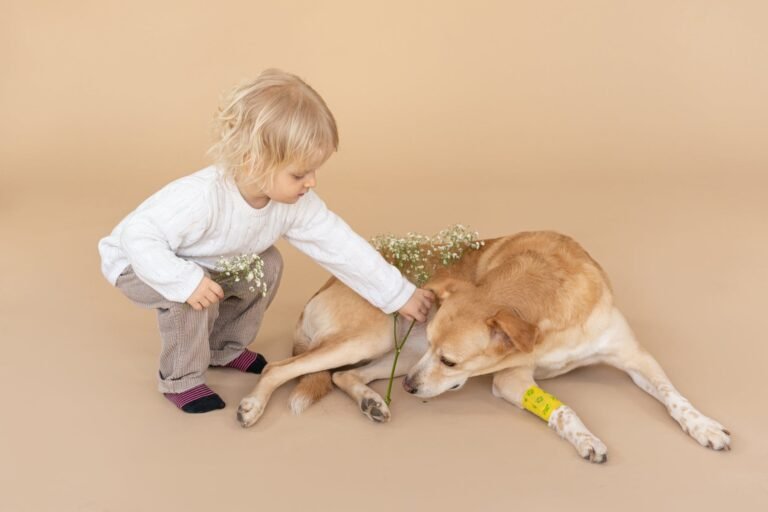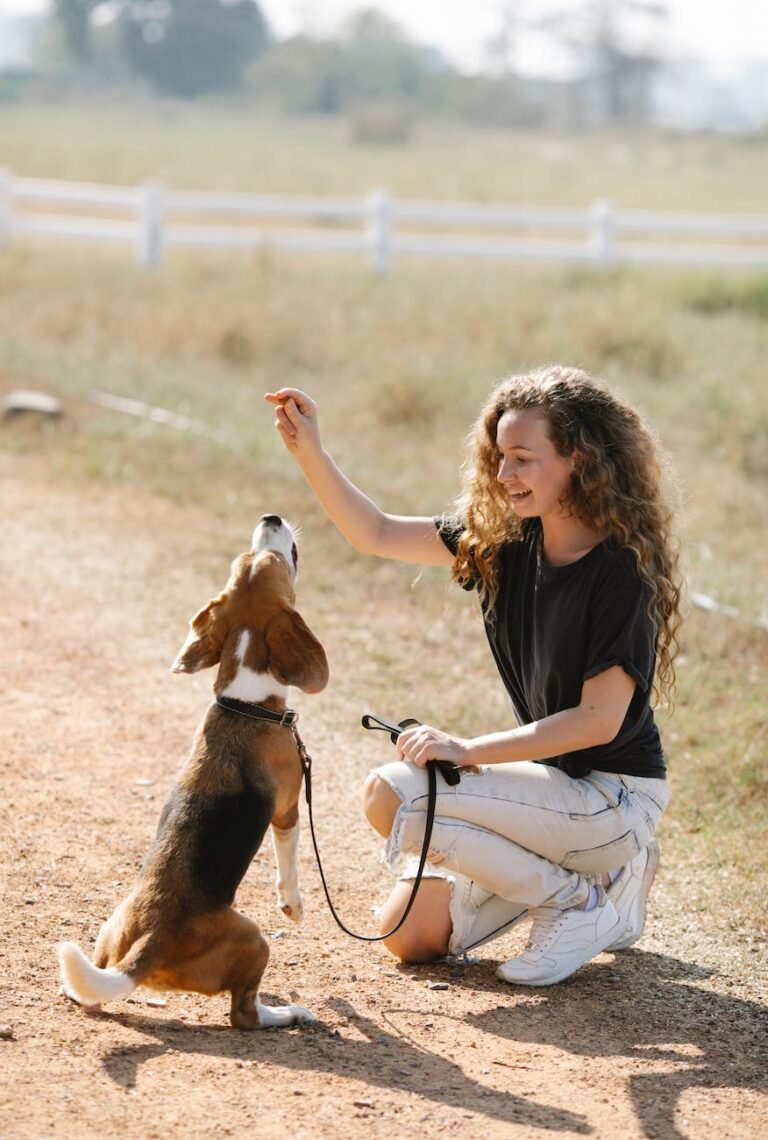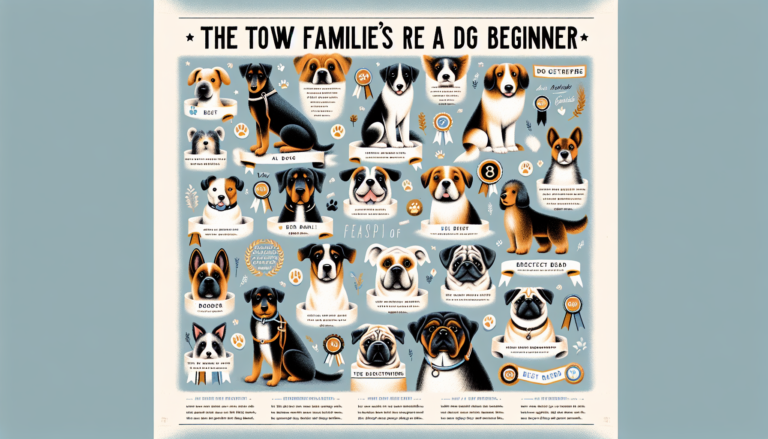Creating Lasting Memories: Choosing Family-Friendly Dog Breeds
Finding the Perfect Dog Breed
When it comes to choosing the right dog breed for your family, several factors need to be considered. By carefully evaluating these factors and ensuring they align with your lifestyle, you can find the perfect match that will bring joy and companionship to your home.
Factors to Consider
Before diving into specific dog breeds, it’s important to assess certain factors that will influence your choice:
-
Family Needs: Consider the unique needs and dynamics of your family. Are there children or other pets in the household? Some dog breeds are known for their compatibility with children, while others may be more suitable for households without young kids. Assessing your family’s needs will help narrow down the list of potential breeds that will fit well into your home.
-
Activity Level: Think about your family’s activity level and how much time you can devote to exercising and engaging with a dog. Some breeds require more exercise and mental stimulation than others. If you have an active lifestyle, you may want to consider breeds that are known for their energy and athleticism. On the other hand, if your family prefers a more laid-back lifestyle, there are breeds that have lower exercise requirements and are content with moderate activity.
-
Size and Space: Consider the size of your home and available space for a dog. Larger breeds may require more room to roam, while smaller breeds can thrive in apartments or houses with limited space. Assessing the size and space requirements will help ensure that your new furry family member is comfortable in their living environment.
-
Allergies: If anyone in your family has allergies, you may want to consider hypoallergenic dog breeds. These breeds produce fewer allergens and may be more suitable for households with allergy sufferers. It’s important to note that no dog breed is completely hypoallergenic, but some breeds are known to be more allergy-friendly than others.
Matching Your Lifestyle
Once you have considered the factors mentioned above, it’s time to match your lifestyle with the characteristics of different dog breeds. Here are a few family-friendly dog breeds to consider:
| Breed | Characteristics |
|---|---|
| Labrador Retriever | One of the most family-friendly breeds known for their friendly and gentle nature, as well as their intelligence and trainability. They are patient and tolerant with children (DogTime). |
| Beagle | A gentle and friendly breed that is good with children. They have a happy and outgoing personality (DogTime). |
| Golden Retriever | Known for their loyalty, intelligence, and friendly nature, making them excellent family dogs. They are good with children and other pets (AKC). |
| Cavalier King Charles Spaniel | A small breed known for their affectionate and gentle nature. They are great family pets, especially for families with kids (DogTime). |
| Bulldog | Known for their gentle nature and love for children. They are adaptable and have a low exercise requirement (AKC). |
| Boxer | A strong and energetic breed that is also great with children. They are playful, patient, and protective, making them a good choice for families (DogTime). |
These are just a few examples of family-friendly dog breeds, and there are many more to explore. Remember to research each breed thoroughly, considering their temperament, exercise needs, and grooming requirements. By matching your lifestyle with the characteristics of different breeds, you can find the perfect dog breed that will fit seamlessly into your family and create lasting memories together.
For more information on specific dog breeds and their compatibility with different family dynamics, check out our articles on best dog breeds for families and dog breeds for kids.
Family-Friendly Dog Breeds
When it comes to choosing a dog that will fit right into your family, there are several breeds known for their family-friendly nature. These breeds are not only great companions but also get along well with children and have a gentle temperament. Here are some popular family-friendly dog breeds to consider:
Labrador Retriever
Labrador Retrievers are one of the most beloved family-friendly dog breeds. They are known for their friendly and outgoing nature, making them excellent companions for families. Labs are patient and tolerant with children, and their playful and energetic personality ensures they are always ready for fun and adventure. Their intelligence and trainability also make them versatile and well-suited for various activities. For more information on Labrador Retrievers, visit our article on best dog breeds for families.
Beagle
Beagles are another family-friendly dog breed that brings joy and laughter to any household. They have a happy and outgoing personality, and they are known for being gentle, friendly, and good with children. Beagles are social animals and thrive in a family environment where they can be a part of all the activities. Their small to medium size also makes them suitable for families living in apartments or houses with limited space. Learn more about Beagles in our article on dog breeds for kids.
Golden Retriever
Golden Retrievers are often considered the epitome of a family-friendly dog. They are known for their loyalty, intelligence, and friendly nature, which makes them excellent companions for children. Golden Retrievers are gentle, patient, and tolerant, making them a great choice for families with kids of all ages. These dogs are also sociable with other pets, making them a harmonious addition to multi-pet households. Discover more about Golden Retrievers in our article on best dog breeds for families.
Cavalier King Charles Spaniel
Cavalier King Charles Spaniels are small-sized dogs with big hearts. They are known for their affectionate and gentle nature, making them perfect for families of all sizes. Cavaliers are good with children and enjoy being part of family activities. They are adaptable and can thrive in both urban and rural environments. Their size and low exercise requirements also make them suitable for families living in apartments or houses with limited outdoor space. To learn more about Cavalier King Charles Spaniels, visit our article on companion dog breeds.
Bulldog
Bulldogs may have a tough exterior, but they are gentle and loving when it comes to their families. They are known for their gentle nature and love for children, which makes them one of the best family-friendly dog breeds. Bulldogs are adaptable and can adapt to different living situations, including apartments. They have a low exercise requirement, making them suitable for families with a less active lifestyle. To find out more about Bulldogs, check out our article on best dog breeds for families.
Boxer
Boxers are known for their strength and energy, but they are also great with children. They are playful, patient, and protective, making them an ideal choice for families. Boxers love to be involved in family activities and enjoy spending time with their human companions. Despite their energetic nature, they are gentle and tolerant with children. Boxers require regular exercise to keep them happy and healthy. Learn more about Boxers in our article on dog breeds for kids.
When choosing a family-friendly dog breed, it’s important to consider factors such as activity level, size, and space requirements, as well as any allergies or sensitivities within the family. Take the time to research and meet different breeds to find the perfect match for your family. Consulting with experts, such as breeders or veterinarians, can also provide valuable insights. With the right family-friendly dog breed, you can create lasting memories and enjoy a loving and joyful bond with your furry friend.
Characteristics of Family-Friendly Breeds
When choosing a dog breed that is suitable for your family, there are several important characteristics to consider. Family-friendly breeds typically exhibit a friendly and gentle nature, are good with children, and possess trainability and intelligence. These qualities contribute to a harmonious and enjoyable relationship between your family and your four-legged companion.
Friendly and Gentle Nature
Family-friendly dog breeds, such as the Labrador Retriever, are known for their friendly and outgoing nature. They have a natural affinity for people and often display affectionate behavior towards their family members. Labrador Retrievers are particularly patient and tolerant with children, making them an excellent choice for families (DogTime). Similarly, breeds like the Golden Retriever, Beagle, Cavalier King Charles Spaniel, Bulldog, and Boxer are known for their gentle and friendly dispositions, making them wonderful companions for families (AKC).
Good with Children
When selecting a family-friendly breed, it is crucial to consider how well the breed interacts with children. The best family-friendly breeds are patient, tolerant, and enjoy the company of children. Labrador Retrievers, Beagles, and Bulldogs are examples of breeds that are not only good with children but also exhibit a natural affinity towards them (DogTime). Their friendly and gentle nature allows for harmonious interactions, fostering a positive and safe environment for both the dog and the children.
Trainability and Intelligence
Trainability and intelligence are important factors to consider when choosing a family-friendly breed. Breeds that are quick to learn and respond well to training are often easier to manage within a family setting. Labrador Retrievers, for example, are not only known for their friendly nature but also for their intelligence and trainability (Chewy). This combination of traits allows for effective training and ensures that the dog can understand and follow commands, making them easier to manage in various situations.
Additionally, breeds like the Boxer and Golden Retriever exhibit high levels of trainability and intelligence, enabling them to learn and adapt quickly to different situations (DogTime). Their ability to understand and respond to commands enhances their compatibility with families, as they can be easily integrated into daily routines and activities.
By seeking out breeds with a friendly and gentle nature, good compatibility with children, and a high level of trainability and intelligence, you can increase the likelihood of finding a dog that will become a cherished family member. When researching breeds, always consider the specific needs and dynamics of your family to ensure a perfect match. Remember, a well-suited family-friendly breed can bring joy, love, and lasting memories to your family for years to come.
Assessing Your Family’s Needs
Before bringing a new furry family member into your home, it’s important to assess your family’s specific needs and lifestyle. This will help you determine which dog breed is the best fit for your family. Consider the following factors: activity level, size and space requirements, and allergies and hypoallergenic breeds.
Activity Level
The activity level of your family plays a crucial role in choosing a dog breed that will thrive in your environment. Some families lead active lifestyles, while others prefer a more laid-back approach. It’s important to find a dog breed that aligns with your family’s energy level.
If your family enjoys outdoor activities, such as hiking or running, a breed like the Labrador Retriever might be a great fit. Labradors are known for their high energy levels and enjoy being active with their families. On the other hand, if your family prefers a more relaxed lifestyle, a breed like the Cavalier King Charles Spaniel could be a better match. Cavaliers are known for their gentle and calm nature, making them a perfect companion for a quieter household.
Size and Space Requirements
Considering the size and space requirements is crucial when choosing a dog breed that will comfortably fit into your home. Larger breeds may require more space to roam and play, while smaller breeds can adapt well to smaller living spaces.
For families with larger homes and spacious yards, breeds like the Golden Retriever or Boxer may be suitable choices. These breeds thrive in active environments and appreciate having room to move around. However, if you live in a smaller apartment or have limited outdoor space, smaller breeds like the Beagle or Cavalier King Charles Spaniel can adapt well to these living conditions. They are known for their adaptability and can thrive in smaller spaces.
Allergies and Hypoallergenic Breeds
If anyone in your family has allergies, it’s crucial to consider hypoallergenic dog breeds that produce fewer allergens. Hypoallergenic breeds are less likely to trigger allergies or cause allergic reactions in sensitive individuals.
Some popular hypoallergenic breeds that are known to be great with kids include the Bichon Frise, Beagle, and Cavalier King Charles Spaniel. These breeds have hair instead of fur, which reduces the amount of allergens they produce. However, it’s important to note that no breed is completely hypoallergenic, and individual reactions can vary.
When considering hypoallergenic breeds, it’s recommended to spend time with the specific breed or individual dog to ensure that there are no allergic reactions. Consulting with a veterinarian or allergy specialist can also provide valuable insights and guidance.
By carefully assessing your family’s needs in terms of activity level, size and space requirements, and allergies, you can make an informed decision when choosing the right dog breed for your family. Remember, each breed has its own unique qualities, so it’s essential to find the one that aligns with your family’s lifestyle and preferences.
Making the Right Choice
When it comes to choosing the perfect dog breed for your family, it’s important to make an informed decision. Researching breeds, meeting the dog in person, and consulting with experts are essential steps to ensure you find the right fit.
Researching Breeds
Begin by researching different family-friendly dog breeds to understand their characteristics, temperament, and exercise needs. Consider factors such as size, energy level, and compatibility with children and other pets. Websites and breed-specific books can provide valuable insights into each breed’s traits and requirements.
Create a list of breeds that align with your family’s lifestyle and preferences. Take into account the size of your home, the amount of exercise you can provide, and any specific needs or allergies within your family.
Meeting the Dog in Person
Once you have a list of potential breeds, it’s crucial to meet the dog in person before making a final decision. Contact local breeders, shelters, or rescue organizations to arrange visits and interact with the dogs. Observe their behavior, temperament, and how they interact with family members, especially children.
Spending time with the dog allows you to assess their compatibility with your family’s dynamics and lifestyle. Consider factors such as their energy level, sociability, and willingness to engage in activities with you and your family.
Consulting with Experts
Seeking advice from experts, such as veterinarians, professional dog trainers, or experienced dog owners, can provide valuable insights and guidance. They can offer recommendations based on your family’s specific needs and preferences. These experts can help you understand breed characteristics, potential challenges, and the commitment required to care for a particular breed.
Additionally, consulting with experts can help address any concerns or questions you may have about specific breeds. They can provide advice on training, grooming, health considerations, and any breed-specific behaviors you should be aware of.
By researching breeds, meeting dogs in person, and consulting with experts, you can make a well-informed decision when choosing the right dog breed for your family. Remember, each family is unique, and finding the perfect match requires careful consideration of your lifestyle, preferences, and the needs of the dog.
Preparing for Your New Family Member
Welcoming a new furry family member into your home is an exciting time. To ensure a smooth transition and a safe environment for your new puppy, there are a few important steps you should take: puppy proofing your home, training and socialization, and establishing routines.
Puppy Proofing Your Home
Puppy proofing your home is an essential step in preparing for your new family member. It involves removing any potential hazards and creating a safe space for your puppy to explore. Here are some tips to get you started:
- Remove any toxic substances, such as cleaning products, chemicals, and poisonous plants, from areas accessible to your puppy.
- Secure electrical cords and outlets to prevent chewing and potential electrical hazards.
- Keep small objects, like coins, jewelry, and small toys, out of your puppy’s reach as they can be choking hazards.
- Block off areas that are off-limits to your puppy, such as stairs or rooms that are not puppy-proofed.
- Provide a designated space for your puppy with their bed, toys, and water bowl. This will give them a safe and comfortable area to relax.
For more detailed guidance on puppy proofing your home, you can refer to this source.
Training and Socialization
Training and socialization are crucial for your new family member’s development and well-being. Training helps your puppy learn basic commands, house rules, and proper behavior, while socialization exposes them to different people, animals, and environments. Here are some key points to remember:
- Start training early and be consistent with your commands and rewards. Positive reinforcement techniques, such as treats and praise, work well for most puppies.
- Teach your puppy basic commands like sit, stay, come, and leave it. These commands will help establish boundaries and keep your puppy safe.
- Socialize your puppy by exposing them to various situations, people, and other animals. This will help them become well-rounded and confident dogs.
To learn more about training your puppy, you can refer to this source.
Establishing Routines
Establishing routines is important for your new family member’s well-being and behavior. Dogs thrive on predictability, so having consistent routines can help them feel secure and reduce anxiety. Here are some aspects to consider when establishing routines:
- Set a regular feeding schedule for your puppy. This will help with potty training and prevent overeating.
- Take your puppy out for potty breaks at consistent intervals, especially after meals, playtime, and naps.
- Establish a routine for exercise and playtime to keep your puppy physically and mentally stimulated.
- Settle on a consistent sleep schedule to ensure your puppy gets enough rest.
For more information on establishing routines for your puppy, you can refer to this source.
By puppy proofing your home, providing training and socialization, and establishing routines, you can create a safe and nurturing environment for your new family member. These steps will help your puppy adjust to their new surroundings and set them up for a happy and healthy life with your family.
Enjoying Life with Your Family Dog
Once you have found the perfect family-friendly dog breed and welcomed them into your home, it’s time to embark on a journey of joy and companionship. Enjoying life with your family dog involves various aspects, including exercise and playtime, health and wellness, and building a strong bond.
Exercise and Playtime
Regular exercise and playtime are essential for the well-being of your family dog. It helps them release energy, maintain a healthy weight, and stimulates their minds. Engaging in physical activities with your dog not only benefits their overall fitness but also strengthens the bond between you and your furry friend.
The amount of exercise needed varies based on the breed, age, and individual energy levels of your dog. It’s important to provide them with opportunities for both mental and physical stimulation. This can include daily walks, interactive play sessions, and engaging toys that keep them entertained. Remember to tailor the exercise routine to suit your dog’s needs and consult with a veterinarian if you have any concerns.
Health and Wellness
Maintaining the health and wellness of your family dog is crucial for their happiness and longevity. Regular veterinary check-ups, proper nutrition, and preventive care are vital aspects of their well-being. Schedule routine visits to the veterinarian to ensure your dog receives necessary vaccinations, parasite control, and dental care.
Feeding your dog a balanced and nutritious diet appropriate for their breed, size, and age is essential. Consult with your veterinarian to determine the best diet plan for your furry friend. Additionally, provide them with fresh water at all times and monitor their weight to prevent obesity.
Building a Strong Bond
Building a strong bond with your family dog is a rewarding experience that enhances the relationship between you and your pet. Spending quality time together through play and training can strengthen this bond. Engage in interactive play sessions, teach them new tricks, or participate in organized activities like agility training or obedience classes.
Positive reinforcement training techniques, such as using treats and praise, can help establish trust and strengthen the bond between you and your dog. Patience, consistency, and understanding are key qualities when it comes to building a strong bond with your furry family member. Remember to always prioritize their well-being and use training methods that are appropriate for their breed and temperament.
By prioritizing exercise and playtime, ensuring the health and wellness of your dog, and building a strong bond, you can create a fulfilling and harmonious life with your family pet. Cherish the moments spent together, celebrate their milestones, and continue to provide them with love, care, and attention. Enjoy the journey of companionship and the lasting memories you will create with your beloved family dog.







